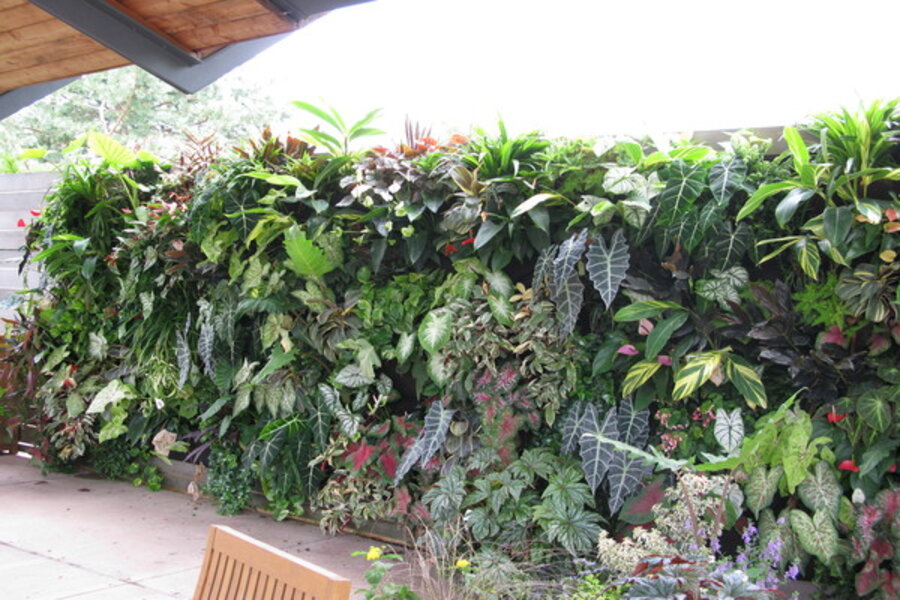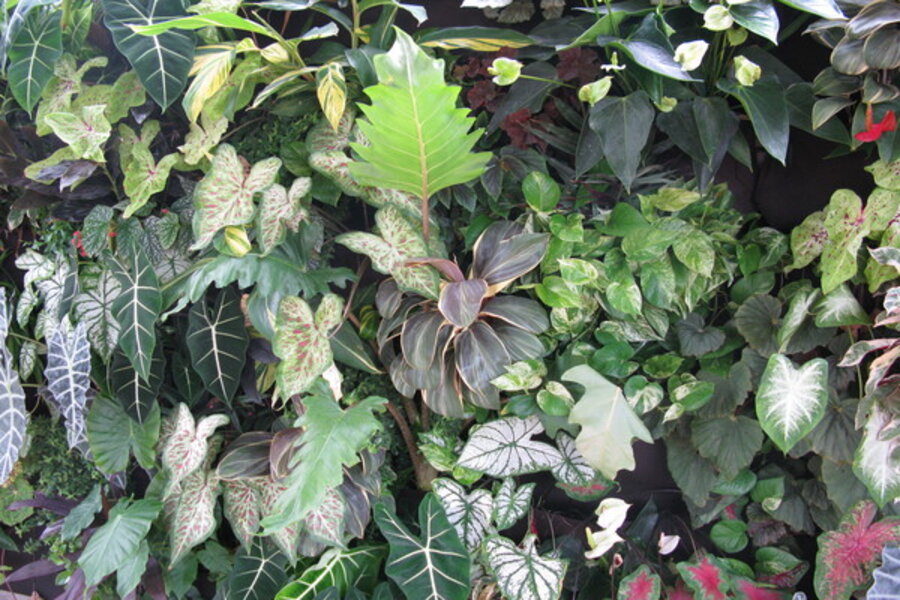Vertical gardens: The good, the bad, the ugly
Loading...
The gardening trend that is currently sweeping the country – nay, let’s say sweeping a good portion of the gardening world, a trend that has many of us totally mesmerized -- is vertical gardening .
At first glance, I was enchanted, intrigued, and fascinated by it. Now, after viewing many more vertical “garden” walls, the best I can admit to …I embrace the concept, but am only half-heartedly drawn to their implementation with open arms as I once was.
Why?
Because many people with a blank back fence or wall are jumping on the bandwagon without understanding the system or the long-term significance of the project.
Living tapestries
You may be familiar with Patrick Blanc’s amazing vertical garden system known as Le Mur Vegetal, which allows both plants and architecture to live in harmony with each other.
For those who aren’t, Blanc is the French botanist who, for the past decade or so, has been transforming vertical urban outside walls, mostly in Europe and Australia, into intricate living tapestries that include hundreds of species of plants of a complexity and scale never before realized.
Probably best known for his dramatic, yet gorgeous, living wall on the Musee du Quai Branly in France, Blanc devised an ingenious three-part system, consisting of a PVC layer, felt, and metal frame, which replicates the habitat of plant communities that thrive on wet vertical rock surfaces in nature the world over.
But the underlying secret to Blanc’s system is well-thought-out hydroponics.
As fascinating as his technology is, it’s the visual aesthetics that capture and captivate the imagination. At the very least, Blanc has redefined the meaning of “garden wall.”
While his system is “soilless” and financially out of reach of most of us, many of the other green-wall systems available to gardeners and landscapers today involve some soil, be it suspended in bags or held in bracketed cubbyholes of some sort.
Maintenance requirements not met
Take a garden I saw this summer. Well-planned and beautiful, it was a kaleidoscope of healthy colorful plants that lifted your spirits as soon as you saw it. Well, at least until you reached the back fence!
That’s where the impact of the garden deteriorated. There, three tiers of a black felt-based vertical gardening system were hung horizontally across the fence. Filled to the brim in bulging pockets of soil (and black felt exposed all around them), were numerous different succulents, painfully struggling for survival.
These plants, which are hardy here and typically thrive in the ground even with benign neglect, were, when suspended in felt against the south-facing wall, in need of constant watering in order to cope with the heat and wind of a Midwest summer. Unfortunately, their needs weren’t met – and the whole effect was awful.
Google "vertical gardens" and you will come up with tons of DIY ideas and pictures of beautiful living wall, vertical gardens. But as to information on irrigation, plant choices, weather, and site considerations and the cultural requirements of plants? Not so much!
And therein lies the problem. Done correctly by knowledgeable landscapers or gardeners, the effect is awesome. Conceived by people who don’t understand the systems, plant species choices, or proper cultural requirements, the end result is appalling, to say the least.
And it’s not always the fault of the system.
A shining example
The folks at Ball Horticulture Co. in West Chicago, Ill., got it right. (Unfortunately, Ball is open to the public only once a year during The Garden Conservancy’s Open Days Program. Check its website for schedules.)
Ball's free-standing vertical wall -- chock-full of tropical plants such as caladium, alocasia, ginger, begonia, anthurium, and coloIcasia, and equipped with a drip irrigation system tailored to the needs of the plants -- is both seductive and winsome – during the entire growing season. [It's shown in two photos above. To see the second photo, click on the arrow at the right base of the first picture.]
Proponents of vertical gardening praise the living wall vertical gardens for their beauty. At Ball, the charm is irrefutable.
-----
Betty Earl, the Intrepid Gardener, blogs regularly at Diggin' It. She's the author of 'In Search of Great Plants: The Insider’s Guide to the Best Plants in the Midwest.' She also writes a regular column for Chicagoland Gardening Magazine and The Kankakee Journal and numerous articles for Small Gardens Magazine, American Nurseryman, Nature’s Garden, and Midwest Living Magazine, as well as other national magazines. She is a garden scout for Better Homes and Gardens and a regional representative for The Garden Conservancy. To read more by Betty here at Diggin' It, click here.






